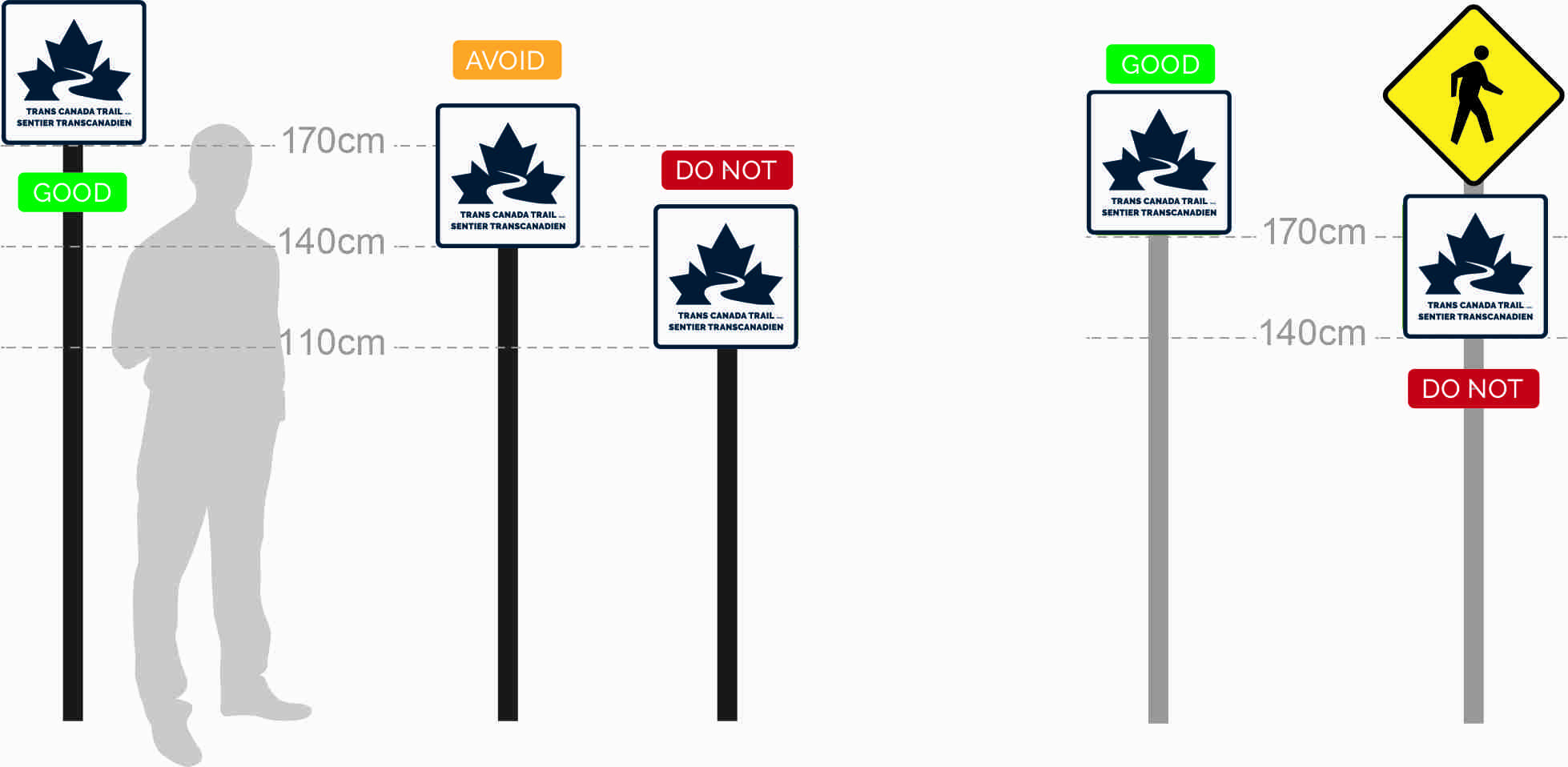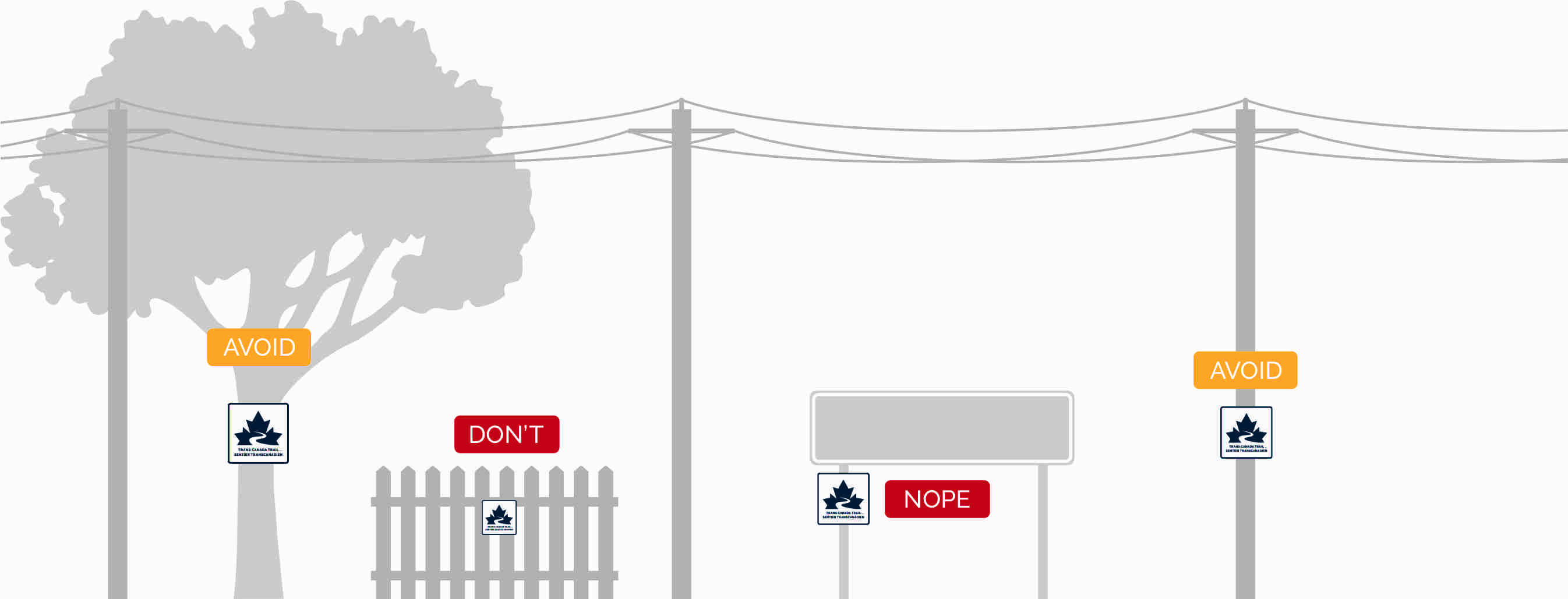Sign Production
Sign materials
The majority of Trans Canada Trail signage is meant for long-term display and therefore aluminum is the recommended material. It is lightweight, durable and suitable for all traffic signage. It can withstand Canada’s various weather systems and does not rust.
Other materials can include wood, plastics, plastic/aluminum composite, stone and other metals.
Materials selection
It is best to discuss your project with a signage consultant or manufacturer to choose what best suits your needs.

Installing Signs
Sign placement
Some aspects of sign placement are easily understood but there are many other factors that are not as obvious and need to be addressed.
Angling Signs for Visibility
To achieve maximize visibility, signs should be angled so that they are facing a point on the trail that is half the visible distance away.
Placement of Reassurance Trail Markers
Whenever possible, reassurance trail markers should be placed on the north side of the trail (when the segment of trail is oriented more east-to-west) or the east side (when the trail is oriented more north-to-south).
Placement of Directional Indicators
Directional indicators are most often found at decision points (intersecting points on a trail). Whenever possible, markers should be placed at the northeast corner of the intersection.
Environmental factors can play a role in the installation and positioning of signage. Some factors to consider are weather, precipitation patterns, dust, and foliage growth. These conditions may justify a change in installation position, more durable hardware or a distinct size of sign.
Installation
It is particularly important to install signage well. A falling sign can lead to damage and/or injury. It is vital to use an appropriate pole system with tamper-proof galvanized or stainless-steel fasteners.
With large sign structures, a base must be part of the construction plan, and in some cases, an engineering study must be performed to assure the sign complies with wind and snow load requirements. You must check with local authorities and research signage by-laws to ensure your installation conforms to building codes. Here is a suggested height installation recommendation when installing signs on telspar or u-channel, along trail or roadway.
It is also important to install signs in appropriate, easy-to-read areas. Installation should only be onto poles or structures that are approved. Some existing signage locations may be on private property or on poles specific for utility or other roadway signage and local authorities or private landowners do not allow additional signs on the same structure. It is also recommended that signage not be installed onto trees, since fasteners tend to cause disease to trees. Also, trees will grow, making the signage useless over time.
A sign manufacturer specializing in large installations can point you in the right direction as well as advise you on the appropriate pole system to use on smaller installations. If your area does not have a sign company, a local general contractor or landscape contractor may also be able to provide guidance.







